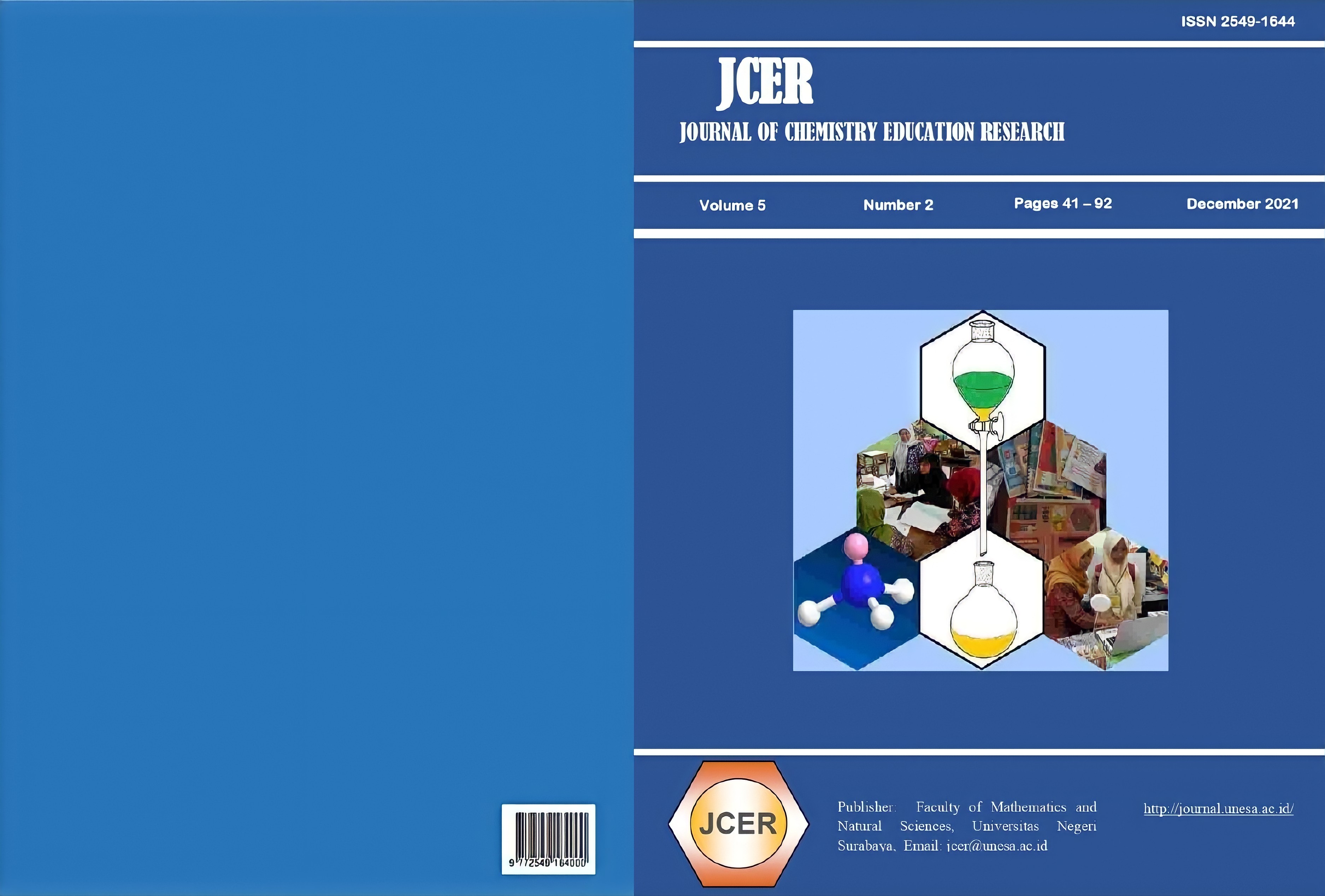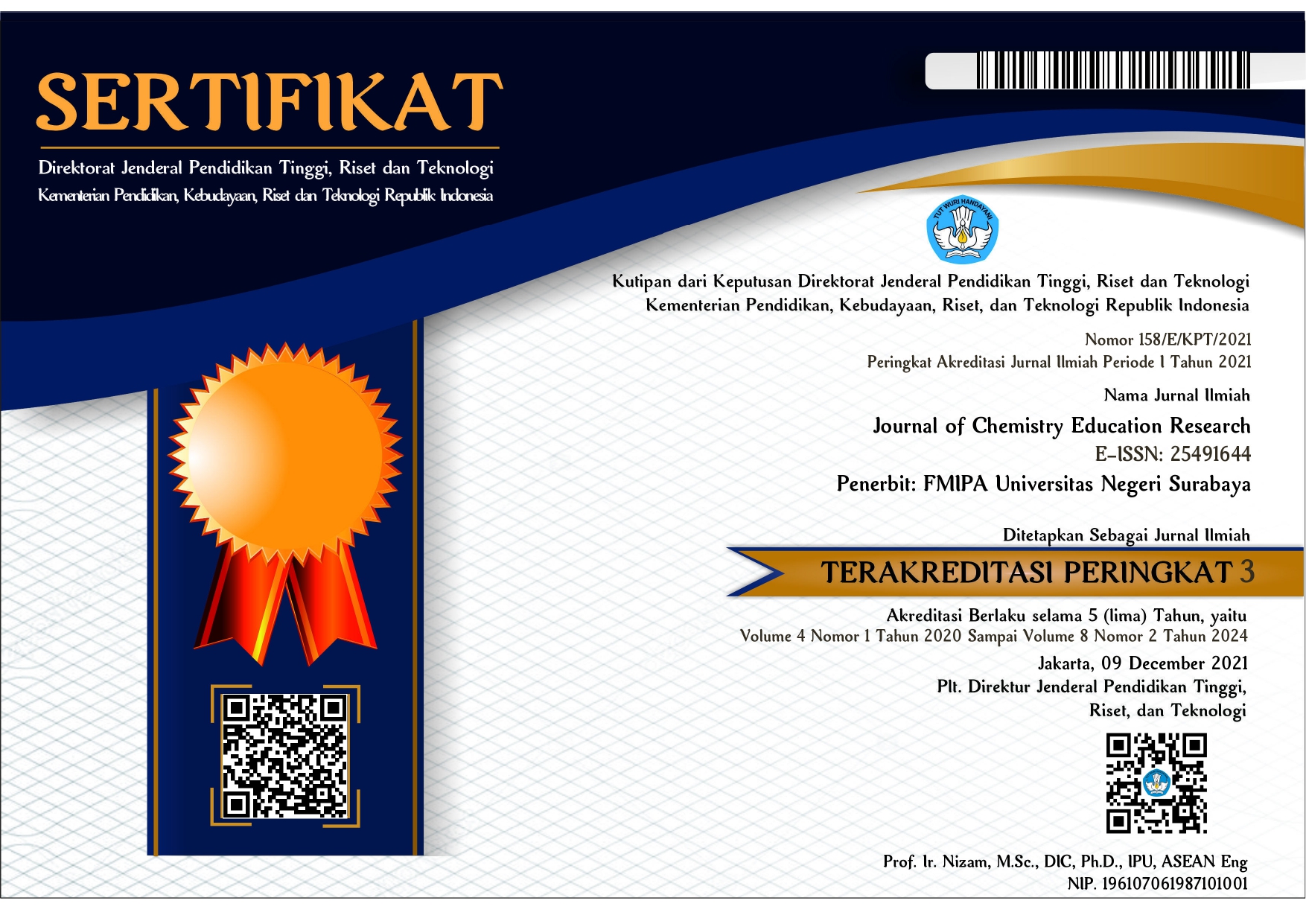IMPLEMENTATION OF PROBLEM BASED LEARNING TO TRAIN CRITICAL THINKING SKILLS STUDENTS AT BASIC ACID MATERIALS
DOI:
https://doi.org/10.26740/jcer.v5n2.p61-69Keywords:
PBL, CTS, Acid BaseAbstract
Abstract. This research to describe implementation of Problem Based Learning models, activities students, and critical thinking skills (CTS) in learning using PBL models on acid-base material. The design used is One Group Pretest Posttest Design with 32 subjects. This study resulted is: (1) implementation of learning using PBL model get the results of the average value sequentially at meetings one and two of 3.60 and 3.76, with very good criteria (2) Students perform relevant activities meaning of students have practiced CTS. The relevant activities of students in sequence at meetings one and two of 98.75% and 97.7%. (3) CTS learners experienced an increase, overall the pretest and posttest scores of students received a percentage of 90.63% students in high category and 9.38% in medium category. The percentage of component of interpretation, inference, and analysis in high category are as follows 78.13%; 81.25%; 90.63%, and the medium category 21.88%; 18.75%; 9.28%.
References
1. Permendikbud. (2016). Peraturan Menteri Pendidikan dan Kebudayaan Nomor 20 Tahun 2016 Tentang Standar Kompetensi Lulusan Pendidikan Dasar dan Menengah. Jakarta: Menteri Pendidikan dan Kebudayaan Republik Indonesia.
2. Facione, P. A. (2015). Critical Thinking: What it is And Why it Counts. California: Measured Reasons and The California Academic Press.
3. Wahyugie, Y. D. (2016). Penerapan Model Problem Based Learning pada Materi Pokok Larutan Elektrolit dan Nonelektrolit Untuk Melatihkan Kemampuan Pemecahan Masalah Kelas X Sma Negeri 7 Kediri. UNESA Journal of Chemical Education. Vol 5 (2).
4. Fatokun, J. O. (2013). A Problem Based Learning (PBL) Application for the Teaching of Mathematics and Chemistry in higher schools and tertiary education: An integrative approach. Academic Journal. Vol 8(11), 663-667.
5. Zabit, M. N. (2010.). Problem-Based Learning On Students ?Critical Thinking Skills In Teaching Business Education In Malaysia: A Literature Review. American Journal of Business Education. Vol 3 (6).
6. Puspitasari, Y. (2016). Penerapan Model Pembelajaran Berbasis Masalah Pada Materi Larutan Elektrolit Dan Nonelektrolit Untuk Melatihkan Keterampilan Berpikir Kritis Siswa Kelas X SMA. UNESA Journal of Chemical Education. Vol 5 (2).
7. Sugiyono. (2011). Metode Penelitian Pendidikan Pendekatan Kuantitatif, Kualitatf, dan R&D. Bandung: Alfabeta.
8. Riduwan. (2015). Skala Pengukuran Variabel-variabel Penelitian. Bandung: Alfabeta.
9. Hake, R. (1998). Interactive-engagement Versus Traditional Methods: A six-Thousand-Student Survey of Mechanics Test Data For Introductory Physic Courses. Amarican Journal Physics. Vol. 66, 66-74.
10. Arends, R. I. (2013). Learning to Teach, Ninth Edition. New York: McGrawHill.
11. Dahar, R. W. (2011). Teori-Teori Belajar. Jakarta: Erlangga.
Downloads
Published
Issue
Section
License
Copyright (c) 2021 JCER (Journal of Chemistry Education Research)

This work is licensed under a Creative Commons Attribution-NonCommercial 4.0 International License.
 Abstract views: 406
,
Abstract views: 406
, PDF Downloads: 313
PDF Downloads: 313



